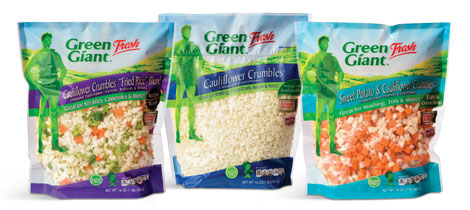Several medical conditions and lifestyle choices may put people at a higher risk for heart disease. These include: high blood pressure, high cholesterol, smoking, diabetes, obesity and being overweight, poor diet, physical inactivity and excessive alcohol use. The good news is that several of these risk factors may be influenced by simple changes in lifestyle, such as what you choose to eat. Try these top 5 foods in your diet that are perfect for your heart’s health.
- Soy Protein — Aim for 25 grams (or around three servings) of soy protein per day from sources such as soynuts, edamame, soymilk, tofu or tempeh.
- Nuts — Aim for 1.5 ounces of nuts per day. That’s roughly a handful (about 12 Brazil nuts, 22 pecan halves, 27 cashews, 36 almonds, 65 peanuts or 73 pistachios).
- Plant Sterols — Aim for 2 to 3 grams per day. Small amounts are found in fruits, vegetables, nuts, seeds, cereals, legumes and vegetable oils. Larger amounts have been added to margarines (Promise Activ or Benecol) and orange juice (Minute Maid Heart Wise).
- Fiber — Aim for at least 25 to 30 grams of fiber per day. To increase fiber in the diet, choose more whole grains (such as oatmeal, whole-wheat bread or pasta, brown or wild rice, quinoa, wheatberries or popcorn), legumes, vegetables, fruits, nuts and seeds (such as flaxseed or chia seed).
- Fish — Aim for two servings of fatty fish per week. Fatty fish, such as salmon, tuna, trout, mackerel, herring, sardines and anchovies, are high in omega-3 fatty acids.
Help your Pulse with Pulses!
Pulses are the edible seeds of plants in the legume family. The most common pulses are dried beans, chickpeas, lentils and dried peas. Pulses are a great way to add filling protein and fiber to your diet. Pulses’ unique fiber makeup has been linked to lowering LDL (bad) cholesterol, improved blood sugar control, weight control and improved regularity. In addition, regular pulse consumption has been linked to a lower blood pressure. February is a great time to check your blood pressure and pulse rate. Ask your Hy-Vee dietitian for details.
5 WAYS TO ADD PULSES TO YOUR DAILY DIET:
- Start your day with pulses. Cooked beans can be seasoned, mashed and spread on your morning toast.
- Add to soups and stews. Add one or more cups of cooked beans to your favorite soup to add color and filling fiber.
- Stretch your meat budget with lentils. You can swap half the weight of ground meat for cooked lentils when making meatballs, tacos, spaghetti sauce and more.
- Use in baked goods. Garbanzo bean flour has a mild taste with a variety of uses.
- Great for snacking. Try roasted and seasoned pulses such as chickpeas and peas. Enjoy hummus, which is made with chickpeas, with raw veggies for another filling snack option.

Heart-Health Shout-Out to Cauliflower
A serving of cauliflower is a good source of fiber, vitamin C, vitamin K, folate and potassium. Cauliflower also contains phytonutrients that have anti-inflammatory compounds and is high in fiber, which may reduce the occurrence of heart disease and stroke. Try more cauliflower in your diet today with your Hy-Vee dietitian Pick of the Month, Green Giant® Cauliflower Crumbles, the most convenient form of cauliflower ever!
View the entire February HealthyBites  newsletter
newsletter